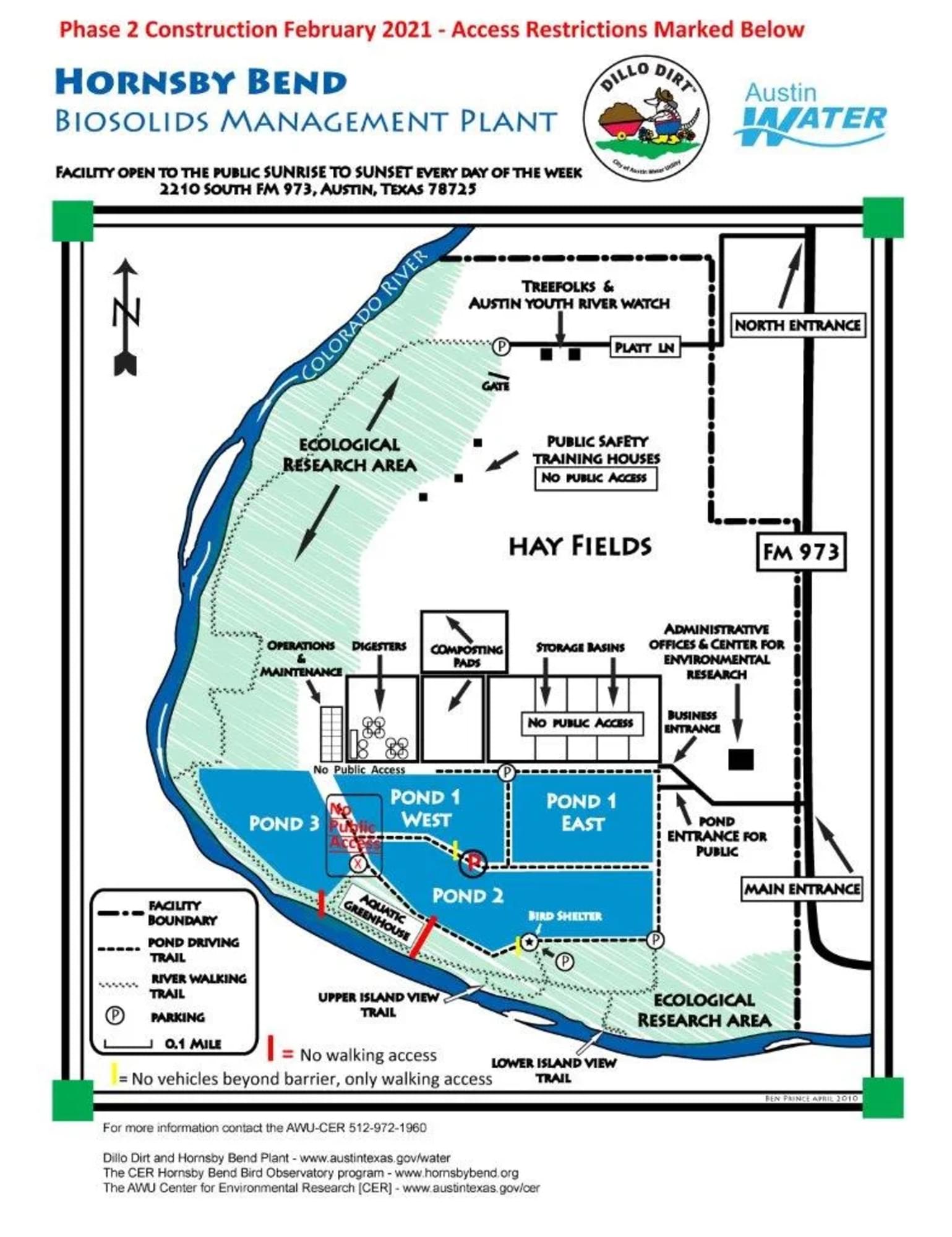Hornsby Bend (HOTE 037)
Birds of Interest
Western, Least, and Pectoral sandpipers are the most common, though 42 shorebird species have been recorded (including such rarities as Northern Jacana, Ruff, and Red Phalarope); Black-necked Stilts and Killdeer breed. Osprey and Peregrine Falcon overwinter, as do thousands of ducks and coots from November to March; Northern Shoveler is the most common species. Black-bellied Whistling-Ducks and Wood Ducks nest nearby, bringing ducklings to the lagoons in early summer. Several non-native species of waterfowl have been released here as well. Swallows are often abundant during migration; flocks sometimes include a few Cave Swallows. Loggerhead Shrikes and Dickcissels nest in nearby fields. Migrant, summering, and wintering songbirds are common along riverside trails during the appropriate seasons. Resident species of the riparian area include Red-shouldered Hawk; among the summer nesters is Indigo Bunting. Some of the many rarities seen at Hornsby Bend over the years: Pacific Loon, Magnificent Frigatebird, Whooping Crane, Black Skimmer, and Fork-tailed Flycatcher.
About this Location
The Hornsby Bend Bird Observatory is a program of the Austin Water Utility's Center for Environmental Research at the Hornsby Bend Biosolids Management Plant. The 1200-acre Hornsby Bend site is located in southeast Austin, Texas.
The Hornsby Bend facility is open from dawn to dusk 7 days a week year-round.
Hornsby Bend Bird Observatory is the best and most frequently birded site in the Austin area. More than 350 species have been recorded here. The Hornsby Bend complex contains four old sewage lagoons, woods along the Colorado River, and fields. Be prepared for unpleasant odors and summer heat and humidity. Insects, though abundant and sometimes annoying, seldom bite. Water levels determine which birds are found in which lagoon, as well as overall numbers present; at the present time (1999), Lagoon 1 West is the best area for shorebirds, and Lagoon 2 is best for ducks. In the near future, Lagoon 3 may be re-flooded to attract shorebirds. Mudflats, drying basins, and short-grass fields usually attract thousands of shorebirds during migration (late March to mid-May and July through October).
For orientation to the Hornsby Bend complex, consult the main kiosk located next to the parking lot outside the Center for Environmental Research (the building near the entrance to the facility). A bird checklist for the facility is available at the CER Main Kiosk, as are other literature and the visitors’ register. In addition to the main kiosk, there are three kiosks atop the levee. The log of recent bird sightings is in the mailbox next to the first levee kiosk. An observation blind is planned for Lagoon 2. A book about the birds of Hornsby Bend, by Rob Fergus, is in preparation (University of Texas Press). The lagoons and riverside trails (mostly wheelchair accessible, with some assistance) are open from 6 a.m. to 8:30 p.m. year-round. Restrooms and water fountains are available inside the CER Monday through Friday, from 7 a.m. to 4 p.m.
Features
Restrooms on site
Entrance fee
Content from Official Website and Guide to Austin Area Birding Sites
